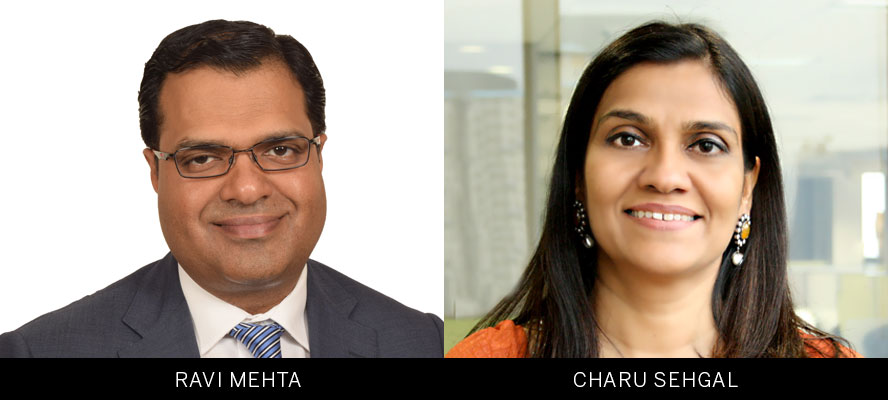By leveraging the power of innovative thinking and new-age capabilities, specifically the 3Ds – Data and Automation, Digital, and Decision Analytics and Artificial Intelligence, we can explore the potential to better manage health, build a multi-tiered healthcare delivery system and significantly augment the capabilities of healthcare professionals, inform Charu Sehgal, Partner, Deloitte India; Ravi Mehta, Partner, Deloitte India; Rachit Mathur, Director, Deloitte India and Vedant Agarwal, Associate Director, Deloitte India
The wellbeing of its citizens is a key priority of any country and India is no different. Although India has been making steady improvements in healthcare, the COVID-19 pandemic has highlighted the need to transform India’s healthcare infrastructure. While COVID-19 has left a trail of despair and disruption in its wake, it has also provided us with a rare opportunity to learn a few very important and hard-fought lessons. For example, high quality and high volume data can be generated and leveraged to better manage personal and community health, home can not only be used as a ‘workplace’ but also as a ‘first level healthcare centre’, drug discovery can be significantly accelerated. We can capitalise on these invaluable lessons to identify ways to leapfrog the standard evolutionary patterns and fundamentally re-imagine our healthcare infrastructure. By leveraging the power of innovative thinking and new-age capabilities, specifically the 3Ds – Data and Automation, Digital, and Decision Analytics and Artificial Intelligence, we can explore the potential to better manage health, build a multi-tiered healthcare delivery system and significantly augment the capabilities of healthcare professionals.
Use data and automation to better ‘care for our health’ and reduce the need for healthcare
Initiatives like Arogya Setu use Bluetooth and geolocation technology to alert users of COVID-19 risk in their surroundings. This capability can be further expanded to prevent the spread of many contagious diseases (and not just COVID-19). Similarly, local language voice-enabled automated intelligent self-learning chatbots can help many semi-learned people get better access to vital information related to commonly occurring illnesses and help them better manage the health of their families. Additionally, many diseases in India are seasonal and dependent on weather conditions. Hence, there is a potential to combine ‘outside data’ (example, weather, presence of disease in a locality) and ‘inside data’ (example, personal healthcare accessories) with “curated insight warehouses” to provide specific, secure and timely insights to proactively monitor and manage individual, family and community health. Effective use of multi-dimensional data has helped India better manage periodically occurring environmental phenomenon (example, cyclones) and the same thinking can be applied to better manage periodically occurring common illnesses. ‘Data’ is as important to the healthcare ecosystem as blood is to the human body and enabling the right data to reach the right people at the right time can help significantly enhance the quality of individual and institutional decision making across the healthcare ecosystem.
Leverage digital to create a more robust, cost-effective and accessible healthcare delivery model
COVID – 19’s impact on our healthcare infrastructure has highlighted the urgency to decongest our hospitals. Delhi’s attempt at ‘Mohalla’ clinics and Hospitals’ triage protocols inspire us to think of a potential ‘III-tier’ healthcare delivery model comprising home, local clinics and hospitals. Digital consults combined with active health status tracking can turn our homes into the first level of healthcare delivery, resulting in preliminary real-time diagnosis. Well-equipped local clinics can become the next level of treatment centres. Use of advanced innovative diagnostics (such as handheld ultrasound) can augment a clinic’s ability to address patient needs without the need for hospitalisation. Implementation of these II tiers of healthcare can enable hospitals’ to focus medical resources to the treatment of critical care and surgical cases.
Use Decision Analytics and Artificial Intelligence to augment capabilities of healthcare providers
According to the Center for Disease Dynamics, Economics & Policy (CDDEP), India is facing a significant shortage of doctors and nurses. Technology advancements have the potential to reduce this human dependency in delivering quality healthcare. For example, an FDA approved ECG application, available on a Smartwatch, can monitor ECGs over a period of time, enabling doctors to identify trends without waiting for test results and improve patient turnaround time. Furthermore, virtual reality simulators that allow surgeons to hone their skills through practice, have the potential to increase the overall quality of surgeries. These path-breaking technologies, coupled with enterprise-level automation in health records and medical prescriptions, can help significantly augment the capabilities of healthcare professionals and extend the overall throughput of healthcare infrastructure.
When the going gets tough, the tough get going. COVID-19 has presented India a unique but challenging opportunity to significantly upgrade its healthcare infrastructure. This journey will require bringing together cutting edge technology capabilities, inspired creative thinking and relentless execution. Through the ‘Mangalyaan’ program, India showcased that it can successfully deliver world-class outcomes at highly attractive cost points. By successfully re-imagining its healthcare infrastructure, India has a chance to not only serve its own citizens well but also show the world that it is possible to deliver high quality healthcare at reasonable and affordable costs.
- Advertisement -


